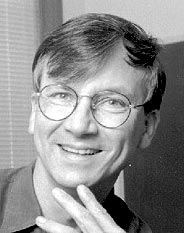

Eric J. Heller

Born January 10, 1946 in Washington, D. C., USA.
Professor of Physics at Harvard University, USA.
Email:heller@physics.harvard.edu
Web: external link
Camile and Henry Dreyfus Teacher-Scholar (1977–82); Alexander von Humboldt Senior Fellow (1985); John Simon Guggenheim Fellowship (1992); Member of the American Academy of Arts and Sciences (1994); Fellow of the American Physical Society; Member of the American Chemical Society; Member of the American Association for the Advancement of Science.
Author of:
Over 130 scientific papers.
Important Contributions:
- Heller has developed and exploited time dependent quantum mechanics in a variety of new contexts. These have had particularly useful application for calculating and for interpreting molecular spectra. The recent experimental interest in overtone and Raman spectroscopy on the one hand and in real time probing of dynamics on the other has been significantly influenced by his work.
- In the 1970's and 1980's he developed the time dependent theory of electronic spectroscopy, including resonance Raman scattering. This work gave a new physical basis for the interpretation of spectra in the graphic terms of molecular motion and the dynamics of quantum wavepackets. Electronic spectra are now routinely analysed in these terms. Using his theories, experimentalists can now "footprint" the dynamics of molecules following excitation. His work also gave a computational basis for electronic spectra that permitted previously unthinkable tasks on large molecules, because eigenstates did not have to be calculated. His work also laid the foundation for the interpretation of femtosecond pulse experiments.
- Heller has made fundamental contributions to our understanding of quantum mechanics. He discovered and explained several universal features of quantum eigenstates, including the effect of scars of period orbits. Scars affect molecular spectra and transport in unexpected ways.
- The Gaussian wavepacket methods he developed allow very simple use of trajectories to approximate quantum dynamics.